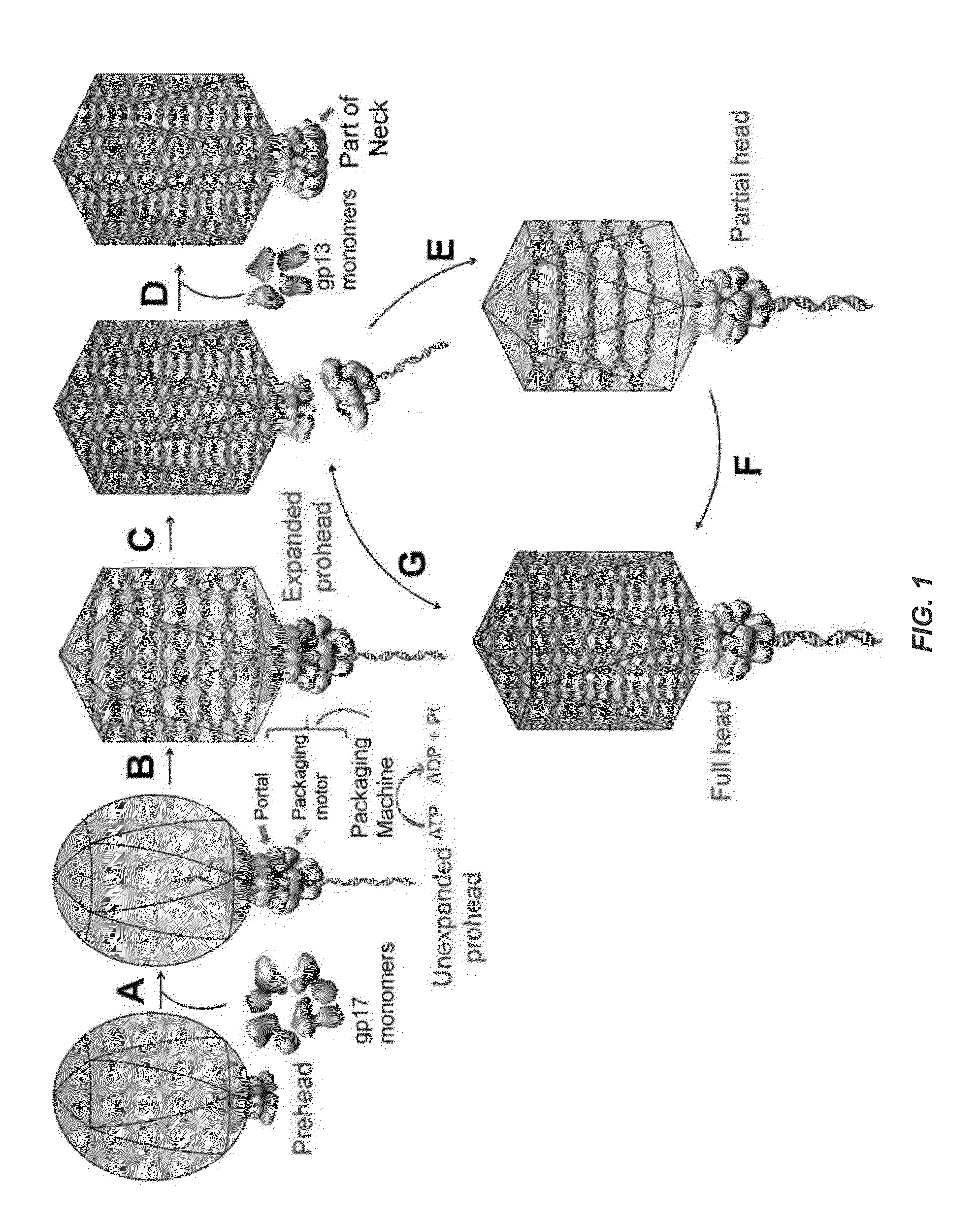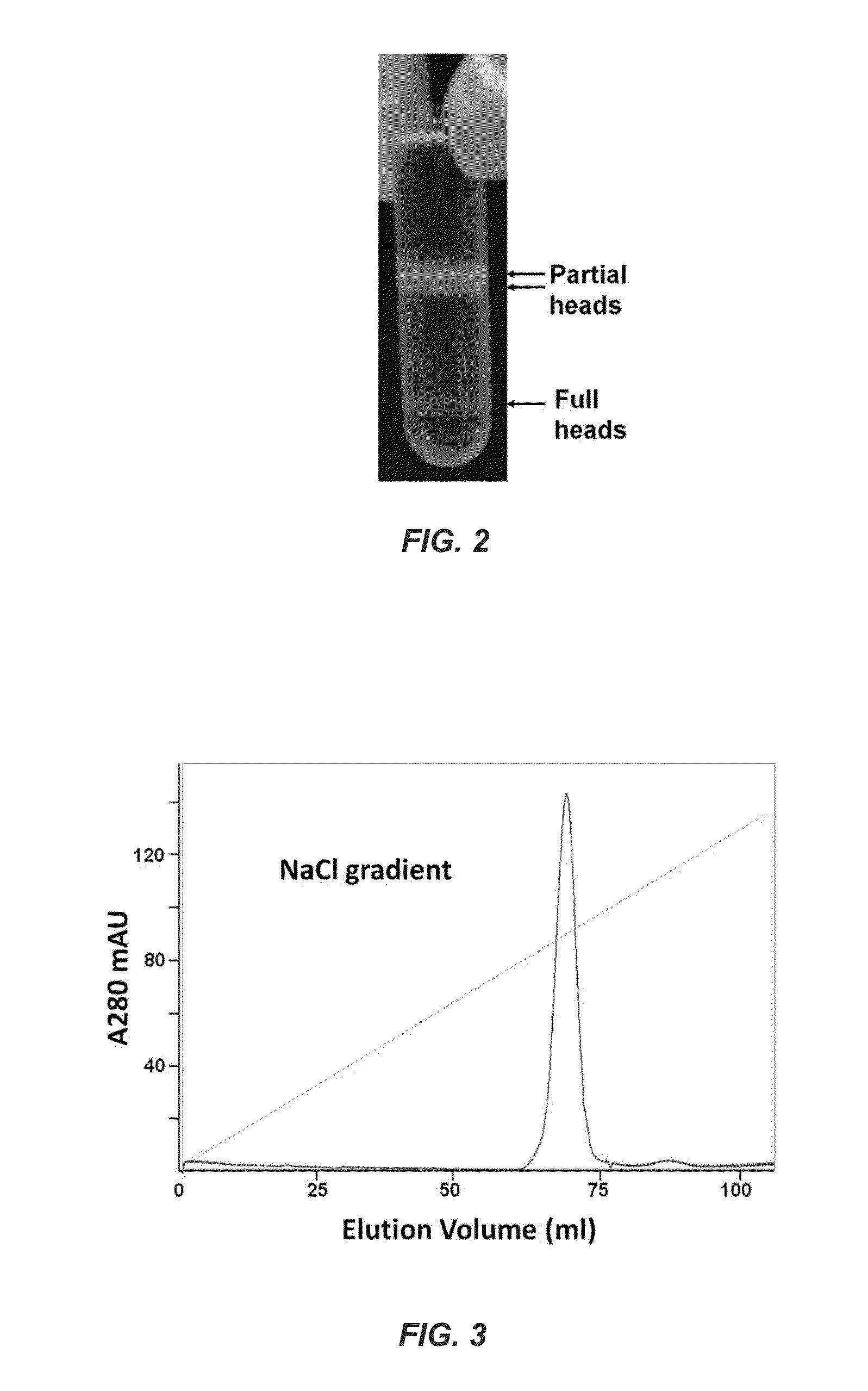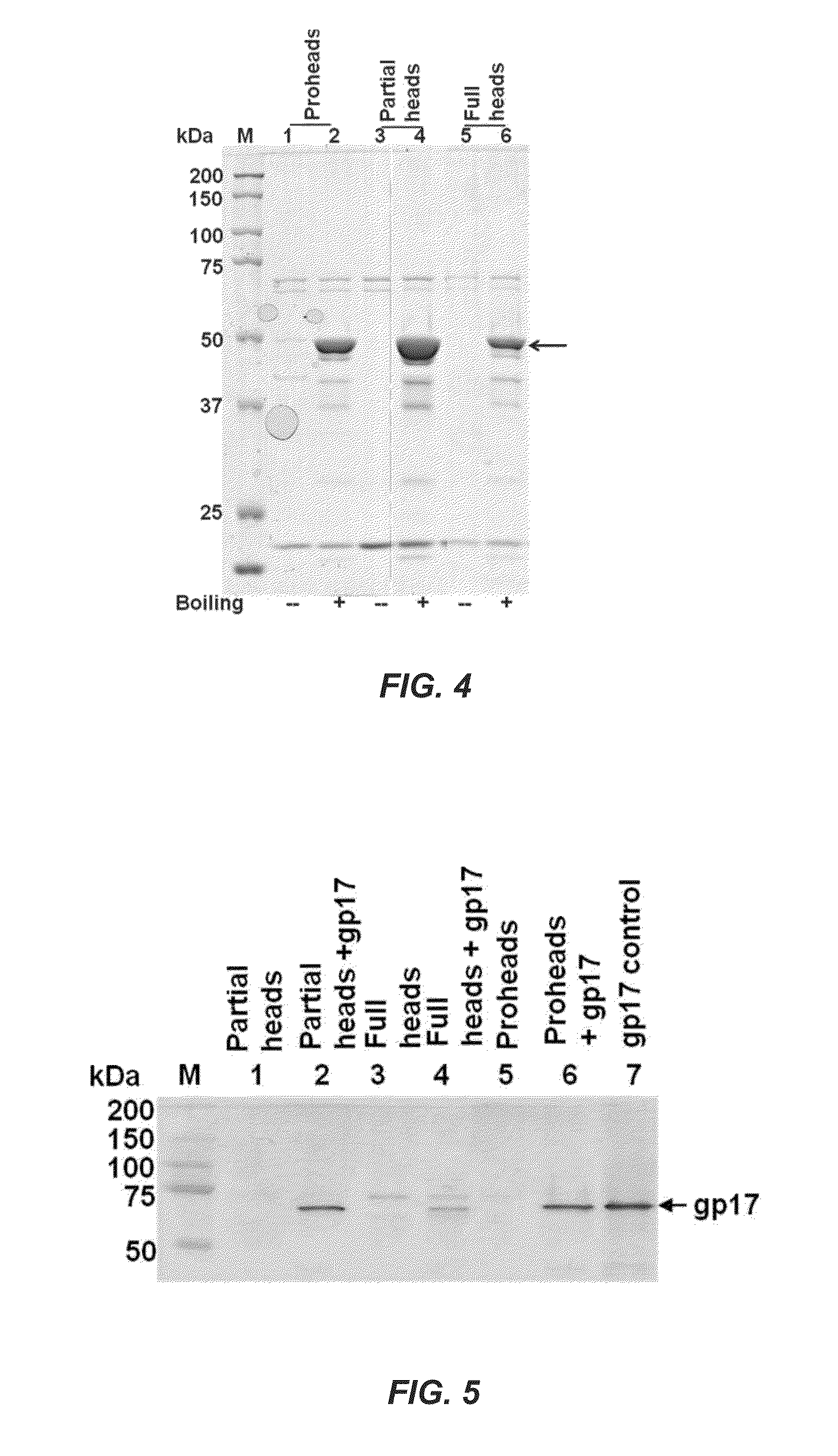Protein and nucleic acid delivery vehicles, components and mechanisms thereof
a technology of nucleic acid and delivery components, applied in the direction of peptide sources, drug compositions, viruses/bacteriophages, etc., can solve the problems of low amount of genetic material being delivered, poor targeting, and inefficiency of gene packaging
- Summary
- Abstract
- Description
- Claims
- Application Information
AI Technical Summary
Benefits of technology
Problems solved by technology
Method used
Image
Examples
example 1
[0099]Phage heads reassemble a functional DNA packaging machine and package DNA. Phage T4 gp10 in association with gp11 forms the tail-pins of the baseplate as described in Leiman et al., “Structure and morphogenesis of bacteriophage T4,”Cell. Mol. Life. Sci. 60: 2356-70 (2003). Since the tail-pin assembly is the first step of tail assembly, tail structures do not assemble in the absence of gp10. The proteins gp13, gp14, and gp15 assemble into a neck that seals off packaged heads, with the gp13 protein directly interacting with the portal protein gp20 following DNA packaging and gp14 and gp15 then assembling on the gp13 platform. 10am13 am mutants (and analogous mutants in phage λ and other phages) complete all the packaging steps including the cutting of concatemeric DNA and dissociation of the packaging motor. DNA-full phage heads accumulate in the 10am13 am mutant infected cells, which can be converted to infectious virions by in vitro complementation with neck and tail proteins....
example 2
[0107]Single mature-phage-head-assembled packaging machines refill the capsid. Although Example 1 shows that full heads package DNA, it may be argued that a fraction of the full heads ejected DNA during CsCl gradient centrifugation, converting them into partial heads. To address this question, 10am13 am heads are prepared without the CsCl gradient centrifugation. The infected cells are lysed in the presence of DNAse I, and phage heads are isolated by differential centrifugation. These heads, which contain a mixture of partial heads and full heads, are packaged with DNA (50- to 766-bp ladder fragments) and are then separated by CsCl density gradient centrifugation. This not only minimized any DNA ejection from full heads but, more importantly, ensures that only the full heads that package DNA sediment to the high-density position (lower band) in the CsCl gradient.
[0108]The partial and full head bands (FIG. 9) are extracted from the CsCl gradient, treated with proteinase K to release ...
example 3
[0110]Single mature-phage-head-assembled packaging machines refill the capsid. Single molecule experiments are conducted using dual-trap optical tweezers in a “force-clamp” mode. Head-gp17 packaging complexes are formed in the presence of the non-hydrolyzable analog, ATP-γ-S, and immobilized on T4-antibody-coated microspheres. The substrate DNA molecules (10 kb) biotinylated at one end are attached to streptavidin-coated microspheres. The microspheres are captured in separate traps and brought into near contact and quickly separated (FIG. 13). This “fishing” procedure is repeated until a tether was formed, as evident by a rise in force when the motor captures the DNA. A constant force of 5 pN is then applied by a feedback loop, and packaging is measured as decrease in tether length as a function of time.
[0111]The data shows that the packaging rates of the partial-head-assembled packaging machines (FIG. 14) are similar to those of the empty proheads (FIG. 16) (˜800-1,100 bp / s). As de...
PUM
| Property | Measurement | Unit |
|---|---|---|
| force | aaaaa | aaaaa |
| angle | aaaaa | aaaaa |
| size distribution | aaaaa | aaaaa |
Abstract
Description
Claims
Application Information
 Login to View More
Login to View More - R&D
- Intellectual Property
- Life Sciences
- Materials
- Tech Scout
- Unparalleled Data Quality
- Higher Quality Content
- 60% Fewer Hallucinations
Browse by: Latest US Patents, China's latest patents, Technical Efficacy Thesaurus, Application Domain, Technology Topic, Popular Technical Reports.
© 2025 PatSnap. All rights reserved.Legal|Privacy policy|Modern Slavery Act Transparency Statement|Sitemap|About US| Contact US: help@patsnap.com



